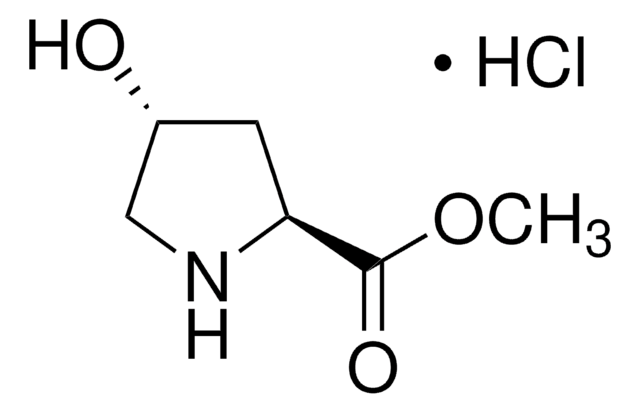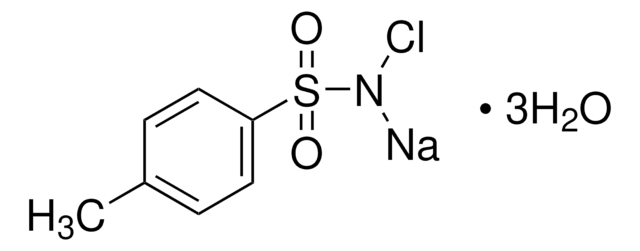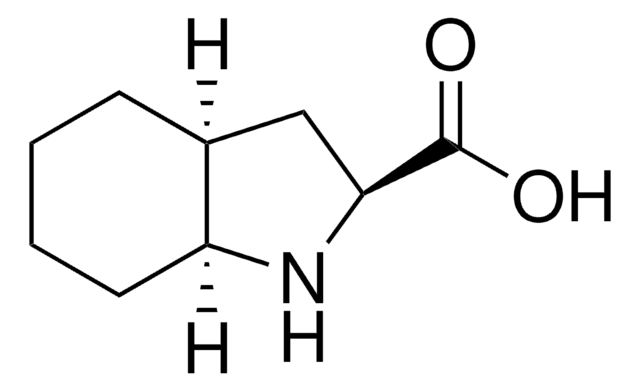41875
trans-4-Hydroxy-L-proline
analytical standard
Synonyme(s) :
(2S,4R)-4-Hydroxypyrrolidine-2-carboxylic acid, Hyp
About This Item
Produits recommandés
Qualité
analytical standard
Niveau de qualité
Essai
≥99% (TLC)
Durée de conservation
limited shelf life, expiry date on the label
Technique(s)
HPLC: suitable
gas chromatography (GC): suitable
Couleur
white
Pf
273 °C (dec.) (lit.)
Format
neat
Température de stockage
2-8°C
Chaîne SMILES
O[C@H]1CN[C@@H](C1)C(O)=O
InChI
1S/C5H9NO3/c7-3-1-4(5(8)9)6-2-3/h3-4,6-7H,1-2H2,(H,8,9)/t3-,4+/m1/s1
Clé InChI
PMMYEEVYMWASQN-DMTCNVIQSA-N
Vous recherchez des produits similaires ? Visite Guide de comparaison des produits
Application
Conditionnement
Autres remarques
Code de la classe de stockage
11 - Combustible Solids
Classe de danger pour l'eau (WGK)
WGK 1
Faites votre choix parmi les versions les plus récentes :
Déjà en possession de ce produit ?
Retrouvez la documentation relative aux produits que vous avez récemment achetés dans la Bibliothèque de documents.
Les clients ont également consulté
Notre équipe de scientifiques dispose d'une expérience dans tous les secteurs de la recherche, notamment en sciences de la vie, science des matériaux, synthèse chimique, chromatographie, analyse et dans de nombreux autres domaines..
Contacter notre Service technique








